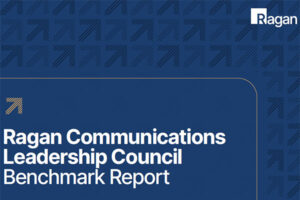Engaging non-desk workers: What are the best apps and practices?
How to keep these vital workers in the know.

A 2021 Gallup report found that almost 80%of employees are actively disengaged when they work.
That’s four out of five people!
Furthermore, since most employees are non-desk workers, they’re the ones who make up most of the above number.
Non-desk workers generally don’t have a corporate device, aren’t included in the company directory and lack a corporate email address, making it easy for these people to feel out of the loop. And gradually, they become more and more disengaged.
How do you avoid this situation and increase engagement?
Let us tell you.
Communication Is key
A lack of connection and inclusion is one of the main reasons for worker dissatisfaction.
You can avoid this by keeping employees in the loop.
Establish a channel that allows you to regularly communicate with employees. This can be email, an internet communication channel like Slack, or any other means that can reliably transfer information.
Before committing to a channel, survey employees to gain a more accurate insight into your current communications strategy—and make questionnaires short and anonymous. The following questions are useful starting points:
→ “How do you access information about the company?”
→ “How do you prefer to receive this information?”
→ “How does your team assist and communicate with you?”
→ “Which channels do you use most frequently?”
→ “Do you feel heard? If not, why?”
→ “Are there more effective communication tools we should know about?”
Now assess the data and adjust accordingly.
Onboarding
Onboarding new staff is integral to employee engagement.
First impressions set the tone for your employees’ experience, so here’s how you can get it right from the outset.
→ Introduce employees to senior management.
Performance and satisfaction improve when team members work with people they know. So introduce new employees to each department in person or through videos and presentations.
→ Talk about your company values.
Make knowing your culture a core part of onboarding. Keep talking about it in the early weeks of work. This tells employees how you and other team members work. Introducing new hires to company culture early on allows them to adapt, adjust, and add value. It also helps them understand company goals and sets expectations.
→ Ensure employees have all the tools and information they’ll need.
Your frontline staff won’t need a laptop, but they will need to access payroll and HR. For new employees to learn and do the work you want them to do, you have to give them the right tools.
It can be as simple as giving them access to your company’s system and providing a short tutorial on how to use it. Don’t let employees get lost in the process.
Digital workplace
Having a digital workplace like Asana, Miro or Trello makes collaborating and organizing tasks easier. How? These tools tell you which tasks need work, which tasks are coming up and when you need to get them done.
Instead of keeping everything on your notepad and forgetting it later, digital workspaces remind employees about their workload. And a bonus: It makes sharing files easier, which is perfect if you are operating in a remote or hybrid setup.
Applaud their wins
Everyone works better when they’re appreciated.
When non-desk employees do a good job, applaud their wins. It can be as simple as giving them a bonus, incentives for the next salary dates if they hit targets or sending a company-wide thank you email.
Employee engagement apps
An employee engagement app is software meant to accomplish what we discussed above. You install it on an employee’s phone or tablet, which lets them stay connected, regardless of location. They can keep up with news and events or share information with the company.
Here are a few of our favorites:
Workgrid
Want to reduce digital friction and give employees easy access to a centralized hub where they can submit vacation requests and review time-off balances and payroll info?
Workgrid makes that happen. It’s intuitive, convenient, and simplifies unnecessarily complicated information tasks.
DeskAlerts
DeskAlerts is an international communication software that lets you send notifications to your employees’ phones, regardless of where they are. You can also send them surveys, polls, or RSVPs for events.
It has a system that lets you schedule communication in advance.
You can install it on both mobile and PC.
Blink
Blink focuses on your frontline staff.
It gives you employee feeds, a secure chat function, and mobile access. Staff members don’t need a company email address to use it.
Additionally, Blink also analyzes employee satisfaction and integrates with other tools.
EngageWith
EngageWith is a platform more than an app. It focuses on rewards and recognition for employees. The intention is to use it to enhance your company culture.
You can integrate it with Microsoft Teams and Slack.
OfficeVibe
OfficeVibe lets you collect employee feedback and conduct surveys to measure engagement levels.
If there are any areas that need improvement, OfficeVibe will tell you.
Enborder
Use Enborder to streamline onboarding processes. You can use it to automate tasks, give new employees virtual tours, and immerse them in the company.
It also lets you provide new employees with videos and other types of interactive communication.
PoliteMail
When people are overwhelmed by communication, they start ignoring it. So how do you know if people are reading or ignoring you?
You integrate the PoliteMail tool into Microsoft 365.
This tool allows you to measure, manage, and improve your communications strategy. It gives you real-time metrics like open rates, read time, and click-through rates.
Having this data is important because it helps you determine if your communications efforts are working.
Disengaged employees are rarely productive employees. Deliberate and streamlined communication, proper onboarding, having a good digital workplace, showing appreciation, and communication apps are a few ways to strengthen employee engagement.
Michael DesRochers is managing partner for PoliteMail.







While you’ve offered solutions for non-desk employees, what about non-TECH solutions? Think: bus drivers, emergency personnel, field workers without cell service. While tech is great, it isn’t the answer for all needs. Any ideas would be welcomed.
Some of the non-TECH solutions that’s worked for us are notice boards, digital screens in common areas for quick news recaps and most importantly, line manager communication or weekly team huddles.